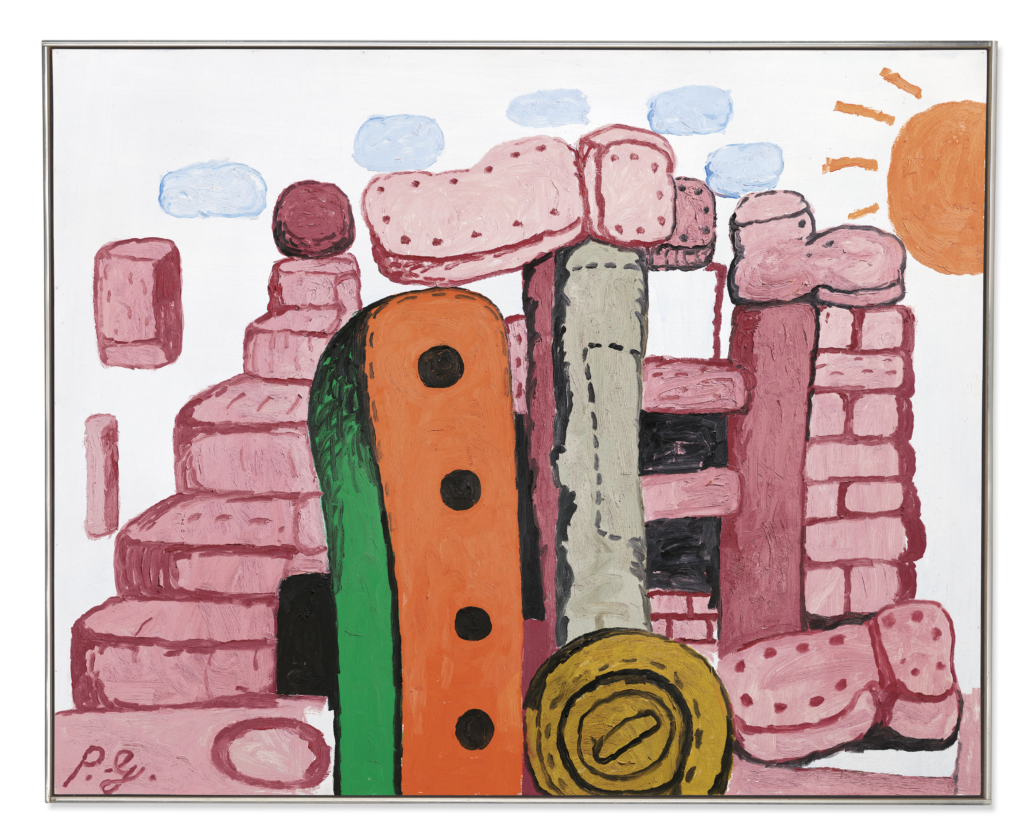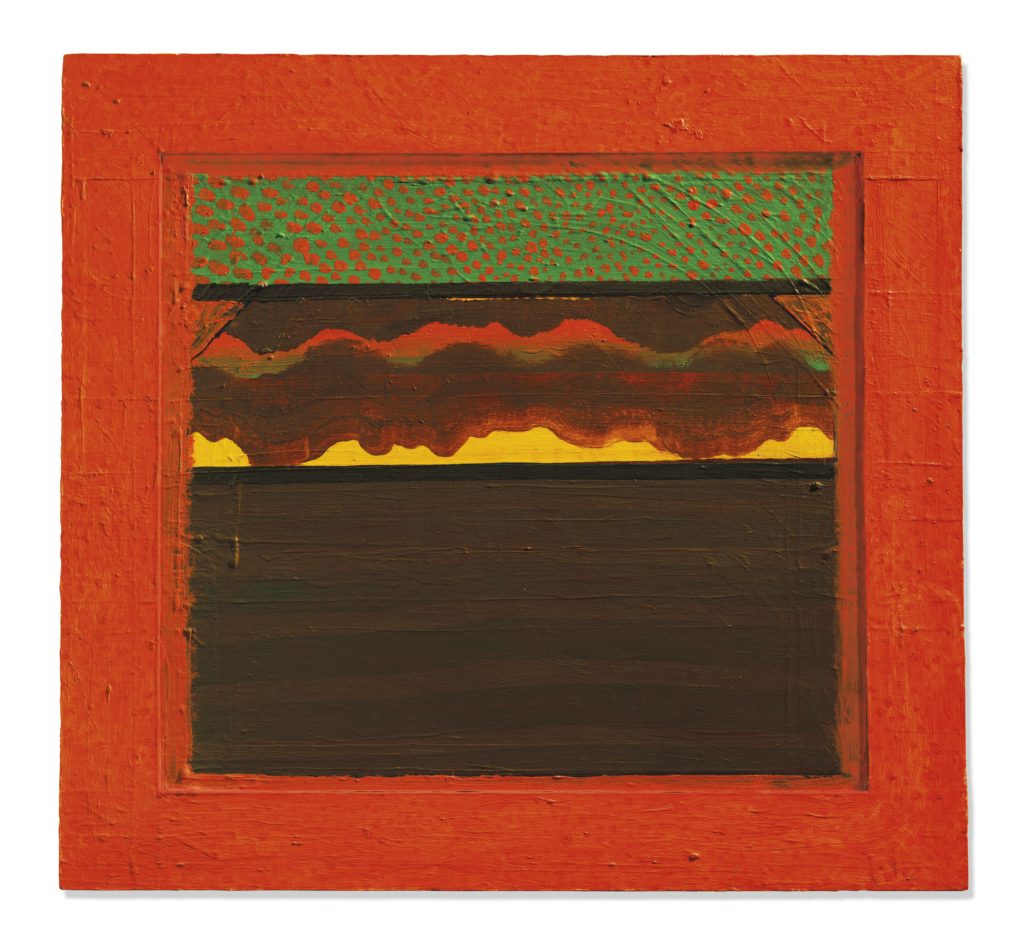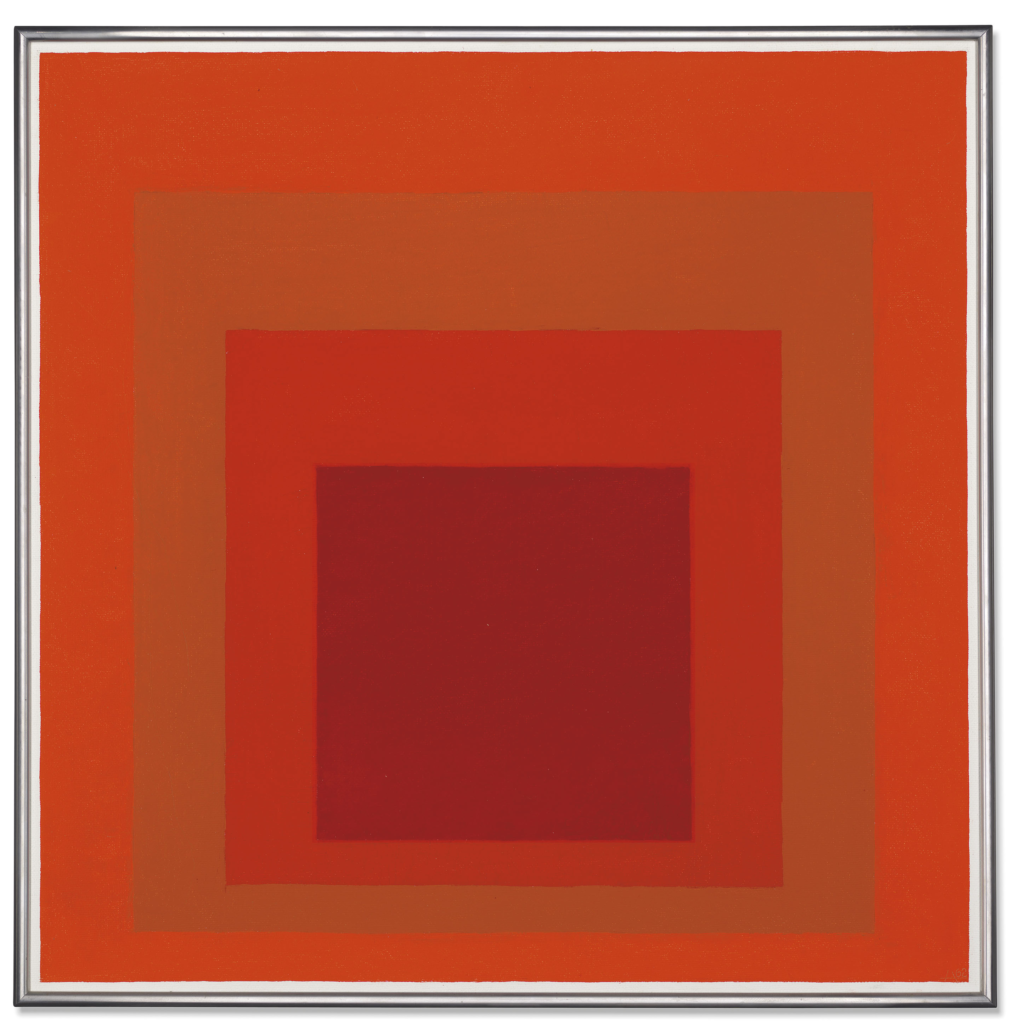Auctions
Christie’s Kicks Off Frieze Week With a Bang With the $28 Million Sale of British Businessman Jeremy Lancaster’s Collection
Philip Guston made a rare auction appearance—and the top lot of the sale.

Philip Guston made a rare auction appearance—and the top lot of the sale.

Colin Gleadell

Christie’s kicked off a busy series of Frieze Week contemporary art sales in London this evening with the collection of Jeremy Lancaster, a British businessman who died in April. The 53 lots were estimated at £13.7 million to £19.5 million ($16.8 million to $24 million) and 48 of them sold for £23 million ($28.2 million). (Sale prices include the buyer’s premium; estimates do not.)
Attendance was good considering the Frieze fairs open tomorrow and the capital was awash with parties and gallery events. This sale had been perceived as a mainly modern British art sale, but bidders from 25 countries from four continents registered, 30 percent of them from Asia.
Lancaster began collecting art in his early 40s, five years after he became managing director of Wolseley, a heating and plumbing firm. His first purchase was a painting by Patrick Caulfield from Waddington Galleries. Over the next 10 years he bought steadily from London galleries—eleven of them, to be exact— buying primarily British art, including Howard Hodgkin and Bridget Riley. By the 1990s, Lancaster’s loyalties cemented with Leslie Waddington who took him on a more classic international path, buying works by Philip Guston, Josef Albers, Pablo Picasso, and Alberto Giacometti. The pace and twin direction of the collection continued until about 2006, when he bought his final Hodgkin (he owned five), this one from Gagosian Gallery.
Guston’s paintings don’t often turn up in London auctions, but this collection had two late works in his cartoonish figurative manner whose market history demonstrates how tastes have changed. Language 1 was painted in 1979, and had gone unsold twice before Lancaster bought it from Waddington in 1995. In 1987 it had been in the Whitechapel Art Gallery sale, masterminded by Nicholas Serota before he went to the Tate, with a £45,000 ($55,300) estimate; and in 1993 it went unsold in New York with a $200,000 low estimate. Now, with a £1.5 million to £2 million ($1.7 million to $2.5 million) estimate, it attracted bidding from the Acquavella Galleries and others before selling to a phone bidder for £3.8 million ($4.7 million), making it the top lot of the sale.

Bridget Riley, Orphean Elegy 7 (1979). Courtesy of Christie’s Images Ltd.
A smaller, late Guston work showing two hooded figures had been bought by Lancaster in New York for $40,250 in November 1994 and saw a healthy return for his estate as it sold for a double estimate £1.1 million ($1.4 million).
The other main result for American art was a classic 1962 red Study for Homage to the Square by Josef Albers that saw competitive bidding from David Zwirner before selling on the phone for a double estimate £1.6 million ($2 million). Former Waddington managing director Tom Lighton remembers Lancaster often joking that he’d paid the gallery too much for the Albers—until in 2014, a similar red square painting sold for close to 1 million pounds. That was more than 15 times what he paid, said Lighton, so the joke ended.
On a par estimate wise with the big Guston work was an undulating, colored Op Art painting, Orphean Elegy 7 (1979) by Bridget Riley, whose market has improved consistently over the years. She has joined the David Zwirner stable and, with a major retrospective traveling from the Edinburgh Arts Festival to the Hayward Gallery in London later this month, the painting attracted a posse of international phone bidders before selling for £2.8 million ($3.5 million)—probably the best price for a painting in color by Riley, as opposed to her earlier black-and-white works.

Howard Hodgkin, Bombay Sunset (1972-3). Courtesy of Christie’s Images Ltd.
Lancaster’s strongest suit was in Howard Hodgkin, a much-loved British artist whose poetic color-drenched compositions that flowed out over their frames never quite cracked the international market, despite Gagosian’s best efforts later in his life. Five works went under the hammer this evening and four sold.
An orange framed Bombay Sunset (1972-3) saw unpredicted bidding from Victorian art specialist Martin Beisly, who was seated with an Asian client, but he was outgunned by a phone bidder who won it at a mid-estimate £731,250 ($899,200), the most expensive of the five. Although that was far from a record, a Hodgkin record for a gouache on card (more a work on paper than an oil on canvas or board) was set when the very early, futuristic Tea Party in America (1948) sold to British art advisor Wentworth Beaumont for a triple estimate £250,000 ($307,000).
Modern British art dealer James Holland-Hibbert persevered to buy Hodgkin’s small oil Venice Sunset above estimate for £371,250 ($456,500) and Beisly finally won another Hodgkin work for his client, taking a heavily dabbed Mrs C (1964), below estimate for £225,000 ($276,700).
The best return for a British artist in the collection was for Frank Auerbach’s thickly encrusted early portrait, Head of E.O.W. (1955). Lancaster bought it in 1996 for £54,300 ($66,700) and it sold this evening to Simon Stock of Gagosian Gallery near the high estimate for £1.2 million ($1.5 million).
Of the foreign artists, apart from Guston, a Picasso sculpture, bought from Waddington in 1998, sold to London’s Pyms Gallery below estimate for £899,250 ($1.1 million), and a Morandi still life, the only Italian work in the sale, sold to Milan dealer, Giulio Tega at a top estimate £731,250 ($899,200).

Patrick Caulfield, View of the Ruins (1964). Courtesy of Christie’s Images, Ltd.
Lancaster had three works by Patrick Caulfield, an artist who resisted the “British pop” label that had been bestowed upon him, one each from the 1960s, ’80s, and noughties. Caulfield has slightly slipped from view since his death in 2005, though the David Bowie sale in 2016 chalked up a record for him of £665,000 ($817,700). The artist is currently the subject of a mini retrospective at London’s Waddington Custot gallery, where prices range up to £490,000 for a large early work.
At Christie’s the gallery bought Caulfield’s Rosso (2001), a small, late work of a bottle of wine lit by a bright lamp, above estimate for £137,500 ($169,000). A larger and earlier 1964 painting of ruins graphically outlined against a red background was estimated at £250,000 to £350,000 ($307,400 to $430,300) and was chased by Beisly, but it sold above estimate again for £491,250 ($604,000)—one of the highest auction prices for Caulfield.
Overseas dealers were a minority at the sale, but some were in the running. Apart from those already mentioned was Michael Haas from Berlin who underbid on a small painting by Giacometti and bought an unusual 1940s Jean Dubuffet gouache of three standing nude women above estimate for £287,250 ($353,200), as well as a playful abstract work by British artist Roger Hilton on the high estimate for £62,500 ($76,800).
Mopping up some other British abstraction was art advisory Gurr Johns, which snagged a 1966 Color Field painting by John Hoyland (who’s the subject of a survey show at Tate Britain currently) for £68,750 ($84,500), and a historically significant abstract work by Victor Pasmore (made shortly after he relinquished figuration, around 1948) for a double estimate £200,000 ($245,900).
The collection also included some all but forgotten names, such as Lisa Milroy, a Canadian figurative painter whose repeated imagery was well regarded in London in the mid-1980s when the work on sale tonight, Three Skirts, was bought—before the arrival of the YBA’s. Although Milroy’s auction prices have perked up to reach £35,000 ($43,000) this was tamely estimated at £5,000 ($6,100) and sold, after some underbidding from Waddington Custot, for £16,250 ($20,000).

Josef Albers, Study for Homage to the Square: Red Tetrachord (1962). Courtesy of Christie’s Images Ltd.
A strange fit into this painterly collection was a conceptual drawing by Art & Language. From a series of works critiquing museum displays and acquisitions, Index: Incident in a Museum(i) is in fact a drawing of the inside of what is now the Met Breuer in New York. It had been an early buy in 1985, soon after the work was made, and seemingly the only one Lancaster made from the Lisson Gallery. The British artists have neither courted nor been courted by the art market. Their dealer, Nicholas Logsdail, might beg to differ, but this work attracted no bids and went unsold with a £20,000 ($25,000) low estimate.
All told, the sale was a great success, if not quite the “electric launch” to Frieze Week that Christie’s had claimed. Certainly Lancaster’s family, and Tom Lighton, who advised them, should be extremely happy with the result. The sale also helped, as dealer Robert Travers said upon exiting, to put the more contemporary end of modern British art on the map. He and 53 other dealers will be exhibiting works by some of these artists at the British Art Fair in the Saatchi Gallery, which opens on Thursday.